This was published 7 years ago
Dubai traditional culture and guided walks: The Dubai you don't know
By Sue Bennett
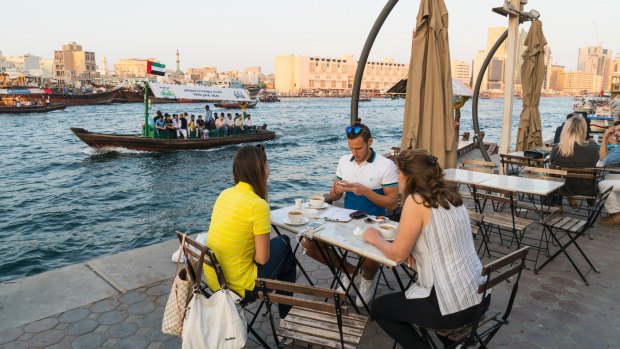
The Creek in Al Fahidi historic district in Bur Dubai.Credit: Alamy
It's a trick question. As I tap through holiday photos on the phone, I ask, "Guess where I went?"
The answer's always the same: Venice.
But they are wrong. The boats, waterside walkways and timber piles beside ferry stations may be reminiscent of the European City of Canals but the truth is much more surprising: Dubai.
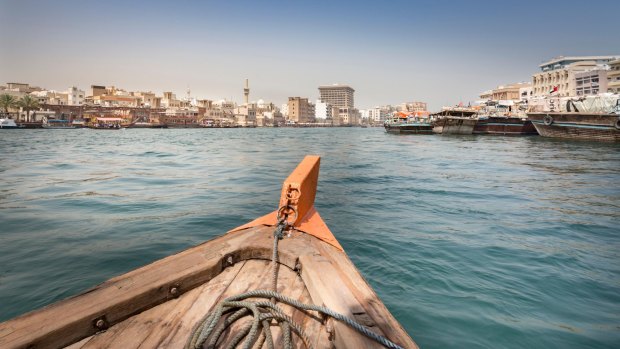
The view to Bur Dubai from a water taxi on the Dubai Creek.Credit: Alamy
Traditional, historic and vehicle-free are not terms normally associated with the glitz, glamour, towering high-rises and gigantic shopping malls of this Middle Eastern city. But step beyond the luxe and the simply astounding to find something much more authentic.
Al Fahidi historical district – also, rather confusingly, known by its older name of Bastikiya – sits alongside Dubai Creek, not far from its entrance into the Persian Gulf. In this sprawling city of 2.4 million, it's as central as anywhere.
Even if it's not on the locals' speed dial. There's no grand entrance to swing into so, arriving from the airport, the driver kindly skips off to find my hotel in the labyrinth of narrow, pedestrian-only laneways. Like the man who picks me up for the return trip two days later, he returns muttering darkly about "not knowing this place existed".
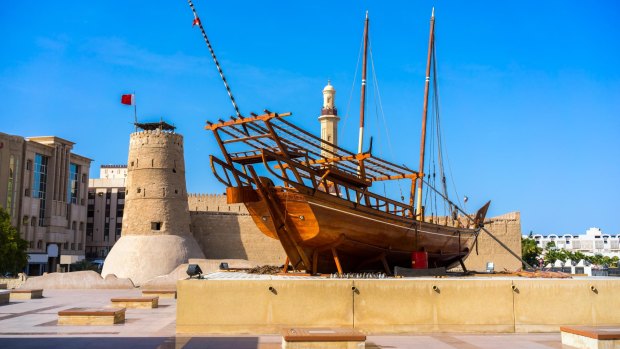
Al Fahidi Fort, home to the Dubai Museum and city's oldest building.Credit: Alamy
For the next 48 hours, I immerse myself in old Dubai on foot and by ferry. No car required. It starts within a few steps, navigating a winding path through the sometimes wide, sometimes narrow stone alleyways between ochre-coloured buildings until I reach XVA Art Hotel, one of two hotels in Al Fahidi.
Beyond its timber framed entrance, there are three shady courtyards, each framed by a raised and covered walkway with doors to guestrooms. Of classic Arabic architecture, the design protects against the harsh climate and gives privacy. My room, No. 8, has four-metre-high, thick white-washed walls with alcoves, polished stone floor and a hefty padlocked door. At night, light through the ornate lattice work of the small, ceiling-high windows throws artistic shadows across the walls.
Climbing the steep steps to the flat, first floor roof, the view is spectacular and dominated by the historic district's wind towers, or wind catchers. Designed to trap the cooler breezes at this height, they force the chillier air downward into buildings. XVA Hotel has three. Their timber crossbars could be draped in wet cloths to further reduce the temperature but it's January and I don't even turn on the air conditioning. It's pleasantly hot during the day but jumper weather in the evenings and a perfect time to visit Dubai.
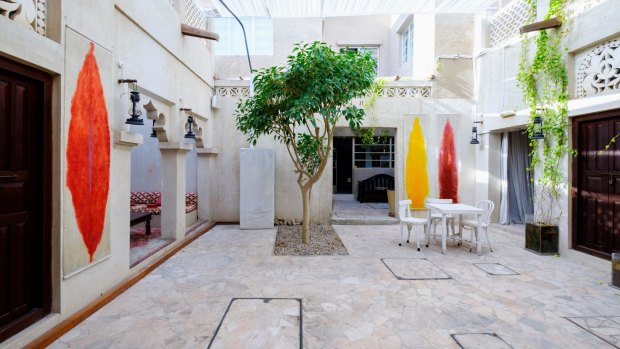
Art works on display at XVA gallery and hotel in Bastakiya old district.Credit: Alamy
It makes walking easy and a good place to start is Al Fahidi Fort, home to Dubai Museum, and said to be the city's oldest building. Over two days, I never quite get to grips with the district's layout of multiple laneways, squares with handful of entrances and exits (but, direction challenged, nor do I try very hard either) and the Creek – more of a wide estuary at this location – is an easy landmark.
Dubai's existence and prosperity is interwoven with the creek and today, it's plied by large, wooden trading vessels and, criss-crossed by traditional motorised abras, or ferries. For the princely sum of 1 dirham (36c), an abra ride is Dubai's premium, step-back-in-time experience.
Strolling alongside the waterway, to the left is the Ruler's Court, a stately building dedicated to Dubai's legal affairs and with showy lush green lawns, but I cut away through the textile souk, or market, resisting good-natured appeals to buy "the best, cheapest, pashminas". The heart of the market is a wide, timber-covered passageway but it's early in the day so most shops are closed behind big wooden doors.
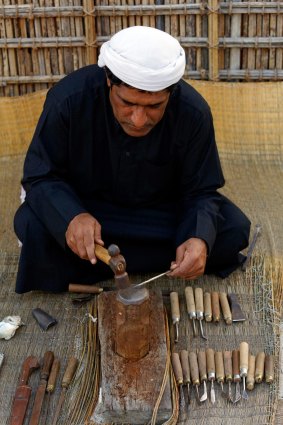
Step back in time: A knife manufacturer in Dubai.Credit: Alamy
A passageway, just one person wide in parts, leads to the Hindu temple complex. Frantically busy, it's perfumed and vividly coloured with floral offerings on sale at tiny stalls. To the side, men remove their shoes and wash their feet, before going in to worship.
Emerging into bright sunshine, Dubai Fort is on the opposite side of a busy road and one of my few encounters with traffic over the two days. Built in 1787, it's a classic fortress above ground but the real richness lies in a museum beneath. Arrive early to avoid the crowds and to really appreciate the excellent recreated city story shown in dioramas, words and pictures. There's plenty of evidence to show people lived in the area in 3000 BC and by the 1500s, it was a trading post and centre for pearl diving.
Many Al Fahidi buildings – now art galleries, museums, hotels, cafes and restaurants – were once well-to-do homes whose owners owed their wealth to textiles and pearls. Much was constructed in the early 1900s by migrants from Bastak, Iran, but by the 1970s, Dubai's shiny, new structures had much greater appeal and the area fell into disrepair.
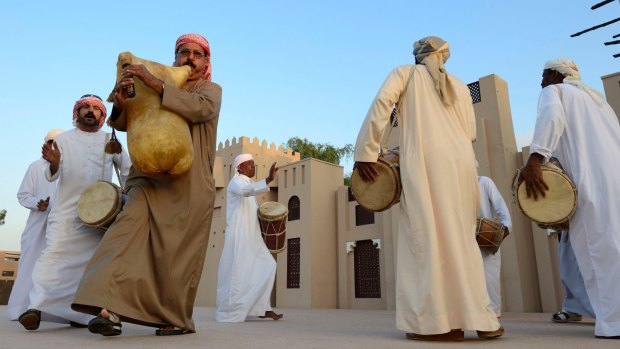
Shindagha a heritage village outdoor museum.Credit: Alamy
A decade later, as the city was on the cusp of demolishing the last remaining part of its historic past, rescue came in the unlikely form of British royal, Prince Charles. While visiting Dubai, it's said he lent support to a campaign to conserve what remained of Al Fahidi.
Ironically, Dubai is now capitalising on its history, re-creating traditional style buildings to house a range of tourist venues including the Heritage and Diving Villages. They are a short walk from Al Fahidi, closer to the Gulf. On the way, there are varied waterside restaurants, some offering shisha, or hookah, smoking.
It's around here you can hop on a ferry at Bur Dubai Abra Station and journey across the Creek to Deira Old Souk Abra Station and walk to the spice souk and, with a longer walk, the gold souk. The abra ride is a highlight. Jump on board, share a long wooden bench with about 19 others, pay the driver with a 1 dirham coin and enjoy the ride. To get back, ideally walk to Sabkha Abra Station and get the ferry back to Dubai Old Souk Abra Station, next door to the textile souk and almost "home". It's easier than it sounds.
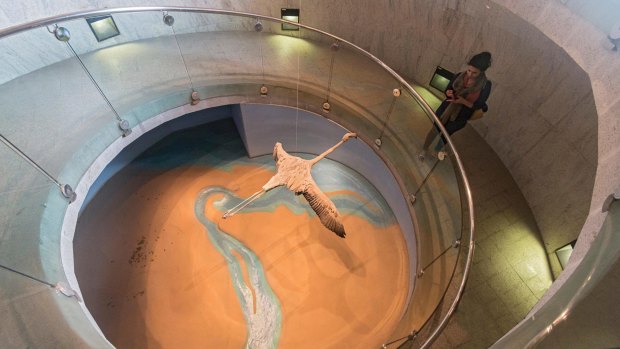
Descending spiral ramp into the lower floors of the Dubai Museum.Credit: Alamy
Similarities with Venice are also dismissed by this encounter. Some sights may be reminiscent but journey across Dubai Creek and ringing out above the lapping water at your feet and the abra's chugging motor, is the call to prayer loudspeakers from the Grand Mosque.
For the rest of my stay, I barely leave the 'hood. The XVA, also a contemporary art gallery, does an excellent breakfast of flatbread, foul (fava) beans, date honey, creamy labneh with good olive oil and fresh fruit.
At night, Bastakiah Nights restaurant is in a beautiful, softly lit courtyard but the food doesn't match its setting. The waiter advises me koresh-e bamich, described on the menu as traditional lamb stew with okra, tomatoes and onions, is "a bit of lamb with a lot of onions … OK for you?" It wasn't really OK but I had it anyway. And I wasn't seduced by the menu's long list of Romantic Cocktail Waves. Throughout Al Fahidi, there's not a ripple of alcohol to be found so my bill detailing a Holsten beer was also rather odd. I drank nothing more intoxicating than a lemon mint throughout my stay and, confess, grew rather fond of this zesty little drink although attempts to recreate it at home are, sadly, a complete failure.
The camel burgers at Local House don't appeal but I fall in love with Arabian Tea House, located in a walled courtyard filled with greenery and flowers, comfortable wicker chairs and day beds dressed in organza nets, canopies and embroidered cushions. Everything is painted white and azure blue. Warm and doughy flatbreads, the size of dinner plates, are served from the red hot tandoor-style oven in one corner behind glass. It's eaten with garlicky hummus and there's a tea for every taste.
At Creekside Restaurant and Cafe, the tables are right beside the water and all life is here to be watched. Abras dart in every direction, one with a bridal party on board, while expensive cruisers take their time. This is the place to go in that travellers' "all I want is a crisp green salad" moment. Mine came with assorted lettuce, tomatoes, radish and a perfect balsamic dressing.
Back in the laneways, I visit assorted art galleries and museums but the real appeal is seeing beyond the entrances and uneven gypsum walls of once fine private homes. For a deeper appreciation of the culture and customs, Sheikh Mohammed bin Rashid Centre for Cultural Understanding runs a range of activities from its base in Al Fahidi. There are guided walks through the district, shared meals and a visit to the Jumeirah mosque, Dubai's only mosque open to the public, and adjoining the centre.
If photographs of wooden craft plying a wide waterway fool people, so does the notion of staying in Dubai yet stepping back in time and staying in a vehicle-free, alcohol-free and air-conditioned-free place and time of this otherwise ritzy, glitzy metropolis.
TRIP NOTES
MORE INFORMATION
GETTING THERE
Emirates Airline flies to Dubai from five Australian cities with multiple daily services from Melbourne and Sydney. emirates.com.au
STAYING THERE
Immerse yourself in old Dubai and stay in the city's preserved old quarter, Al Fahidi. Access is by foot through the district's laneways but once installed in XVA Hotel, it's like stepping back in time. Fear not, each room has an ensuite. Rooms from about 360 dirham ($135).
SEE+DO
Get out the trainers and explore the laneways, markets, art galleries and Al Fahidi fort before taking tea in a delightful walled cafe. Take an abra ferry ride across the Creek. Costing 1 dirham (36c), it's Dubai's premium, step-back-in-time experience.
Sue Bennett travelled to Dubai as a guest of Emirates Airline and stayed in Al Fahidi at her own expense.
Sign up for the Traveller Deals newsletter
Get exclusive travel deals delivered straight to your inbox. Sign up now.